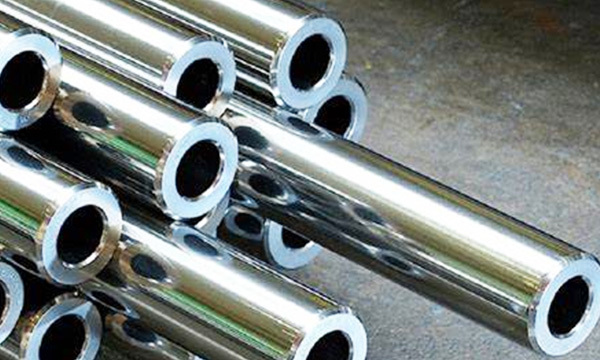Understanding High-Temperature Specialty Alloys: A Comprehensive Guide for Engineers
cheap High-temperature specialty alloys are a unique category of materials specifically designed to perform under extreme conditions. These alloys exhibit remarkable strength, corrosion resistance, and oxidation resistance at elevated temperatures, making them essential for various critical applications.

Typically, high-temperature specialty alloys are utilized in environments that exceed 500°C (932°F), and they often maintain their mechanical integrity in harsh conditions, including exposure to aggressive atmospheres and thermal cycling. Engineers often select these alloys based on specific performance requirements dictated by their applications
Key Properties of High-Temperature Alloys
Understanding the properties of durable high-temperature specialty alloys is vital for engineers who must tailor their designs for specific applications. The most critical properties include:
1. High Strength and Hardness
High-temperature alloys are known for their exceptional strength. They can withstand considerable stress and load while maintaining their structural integrity, even at elevated temperatures. This property is crucial for components subjected to high mechanical forces.
2. Corrosion and Oxidation Resistance
These alloys often contain elements such as chromium and aluminum, which enhance their resistance to oxidation and corrosion. This characteristic is vital for applications in aggressive environments, such as gas turbines and chemical processing
3. Thermal Stability
Thermal stability refers to the ability of an alloy to maintain its physical and mechanical properties at high temperatures. High-temperature alloys are engineered to retain their characteristics even when exposed to fluctuating temperatures.
4. Fatigue and Creep Resistance
Fatigue resistance is the material’s ability to withstand repeated stress cycles, while creep resistance is its ability to resist deformation over time under constant stress. Both properties are essential for components in high-temperature environments, where failure can lead to catastrophic results.
Types of High-Temperature Specialty Alloys
High-temperature specialty alloys china can be categorized primarily into three types: nickel alloys, cobalt alloys, and iron-base alloys. Each category possesses unique characteristics tailored for specific applications.
Nickel Alloys
Nickel alloys are among the most widely used high-temperature alloys. They offer excellent mechanical properties and resistance to oxidation and corrosion. Common nickel alloys include Inconel, Incoloy, and Monel. Engineers often leverage these alloys in aerospace, power generation, and chemical processing industries due to their superior performance at high temperatures.
Cobalt Alloys
Cobalt alloys provide outstanding high-temperature strength and wear resistance. They are particularly effective in aerospace applications where extreme conditions are prevalent. Well-known cobalt alloys include Stellite and Haynes alloys, which excel in maintaining their performance under thermal stress.
Iron-Base Alloys
Iron-base alloys, including stainless steels, are prevalent in numerous applications due to their cost-effectiveness and mechanical properties. While they may not match the performance of nickel or cobalt alloys at extreme temperatures, they are often used in less demanding environments. Their versatility makes them a popular choice for various engineering applications.
Manufacturing Processes for High-Temperature Alloys
The manufacturing of high-temperature specialty alloys involves several critical processes that ensure the desired properties are achieved. These processes can include:
1. Melting and Casting
High-temperature alloys are typically melted in electric arc furnaces or induction furnaces, which provide the necessary temperature control. Following melting, casting methods such as investment casting or sand casting are employed to form the desired shape.
2. Hot Working
Hot working processes, such as forging and rolling, are used to shape high-temperature alloys while maintaining their mechanical properties. These processes can enhance the microstructure of the alloys, improving strength and ductility.
3. Heat Treatment
Heat treatment techniques, including annealing and aging, are employed to optimize the mechanical properties of high-temperature alloys. By controlling the heating and cooling rates, engineers can tailor the alloy’s microstructure to achieve the desired performance characteristics.
Applications of High-Temperature Specialty Alloys
High-temperature specialty alloys find applications across diverse industries, including:
1. Aerospace
In the aerospace industry, high-temperature alloys are critical for components exposed to extreme conditions, such as turbine blades, combustion chambers, and exhaust systems. Their ability to withstand high stress and temperatures makes them indispensable for aircraft engines and jet propulsion systems.
2. Power Generation
High-temperature alloys are extensively used in power generation applications, especially in gas turbines and nuclear reactors. Their resistance to creep and oxidation ensures efficient and reliable operation under severe thermal conditions.
3. Chemical Processing
The chemical processing industry relies on high-temperature specialty alloys for equipment such as reactors, heat exchangers, and piping systems. Their corrosion resistance is crucial in handling aggressive chemicals at elevated temperatures.
4. Automotive
High-performance automotive components, including exhaust systems and turbochargers, benefit from the properties of high-temperature alloys. These materials enhance durability and efficiency, contributing to better engine performance.
spots High-temperature specialty alloys are indispensable materials that enable significant advancements in various industries. By understanding their properties, types, manufacturing processes, applications, and emerging trends, engineers can make informed decisions that enhance their designs and optimize performance. As technology progresses, the potential for high-temperature alloys continues to expand, promising a future of innovative solutions and improved efficiency in demanding environments.
评论
发表评论